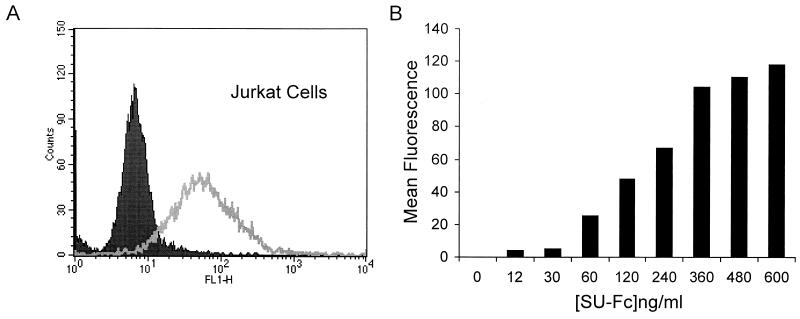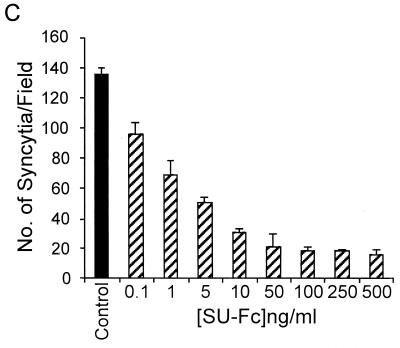FIG. 4.
The chimeric SU-Fc protein retains HTLV-1 receptor binding activity. Jurkat cells were incubated with control fractions lacking SU-Fc (solid histogram) or fractions containing SU-Fc (500 ng/ml) (open histogram); cells were probed for bound SU-Fc protein using anti-Fc FITC-conjugated antibody and detected by fluorescence-activated cell sorter analysis. (B) Dose-dependent binding of SU-Fc to Jurkat T cells. Cells were incubated with increasing concentrations of SU-Fc, and bound protein was detected as described above. Control samples were incubated with a protein fraction that lacked SU-Fc, and the basal mean fluorescence intensity from these controls was subtracted from each of the data points shown. (C) Inhibition of syncytium formation by SU-Fc. HeLa target cells expressing endogenous receptor were cocultured with donor Cos-1 cells transfected with the HTLV-1 envelope-expressing vector pHTE-1 in the presence of a control fraction lacking SU-Fc (control) or with increasing concentrations of SU-Fc as indicated. Cultures were scored for syncytium formation per low-power field; the data represent the means and standard deviations from five random fields per culture from three independent cultures.


